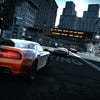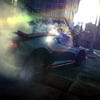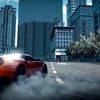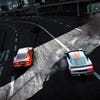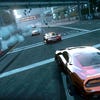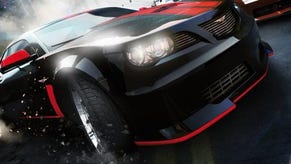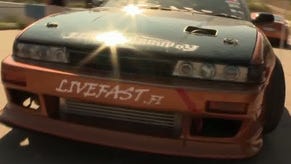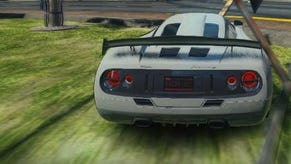Ridge Racer Unbounded dev cut tutorial for controversial controls
Considering patch to address issue.
Ridge Racer Unbounded developer Bugbear Entertainment has admitted it cut an in-game tutorial that helped explain the game's polarising drift controls.
Bugbear is now considering a patch to address complaints about Unbounded's control scheme, which stem from a failure to adequately explain how the game's braking technique operates.
A tutorial to aid gamers with the game's controls did exist in working builds of Unbounded, lead producer Joonas Laakso revealed to Eurogamer. It lasted until "not too many weeks before launch", before it was removed.
"We felt it over-explained things and got in the way. So perhaps, lesson learnt there," Laakso said.
The tutorial was cut as it had become "a pain to update" as the game's mechanics changed during development. Developer Bugbear also felt its existence was "too in your face" and might make players feel like it was "underestimating" them.
"We're now thinking that we should find a way to include a more hands-on tutorial," Laakso continued. "A patch is a possibility, we haven't decided anything yet. It would be preferable to have [the drifting information] in the game."
Despite wide reports of players being unable to decipher the game's drifting controls - including Eurogamer's own Tom Bramwell, who documented his efforts in Eurogamer's 8/10 Ridge Racer Unbounded review - Bugbear originally intended the game to be "very, very straightforward".
"What we set out to do originally was make the game very, very straightforward and very acessible," Laakso explained. "But towards the end of development it started to feel like the game felt too 'light'. We did tune it harder towards the end, but the assumption was we were only making it harder for the top end, once you already know what you're doing.
"But certainly it feels like people are struggling and I'm not sure why that is. Maybe we had the wrong type of player in our play-test."
"It feels like people are struggling and I'm not sure why that is. Maybe we had the wrong type of player in our play-test."
Laakso believes the "underlying problem" behind the control trouble is the result of the studio's attempt to create a game based on realistic physics that also boasted arcade features.
"The problem with that is we couldn't just bolt arcade features on top. You need completely different driving physics to do it that way. We had to figure out a way to make it feel 'larger than life' while maintaining its physics simulation background.
"We went through a number of different models for how can we make physically simulated but over-powered vehicles. These actually did kind of work but they were super hard to control."
This led to the brake button controls present in the final game, Laakso concluded.
"What happens when you press the brake button is you magically lose the grip from your rear wheels - as long you press the button - which allows you to turn the car in a slide and steer it with the front wheel. So it feels physically simulated but we're doing interesting things in the name of gameplay."
Regardless of the reasons for the brake button's design and usage, Laakso admitted the final game "didn't communicate it well enough".
"In our focus group that wasn't an issue, when we tried the game with new players who hadn't tried the game before they got it quickly enough. Maybe we just got unlucky."


